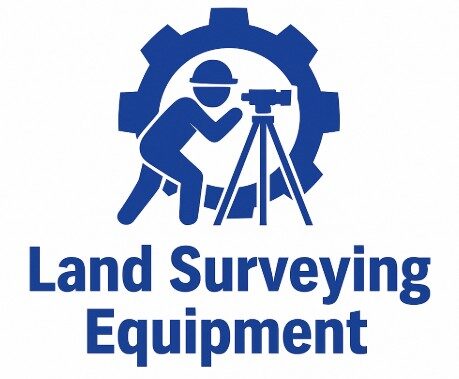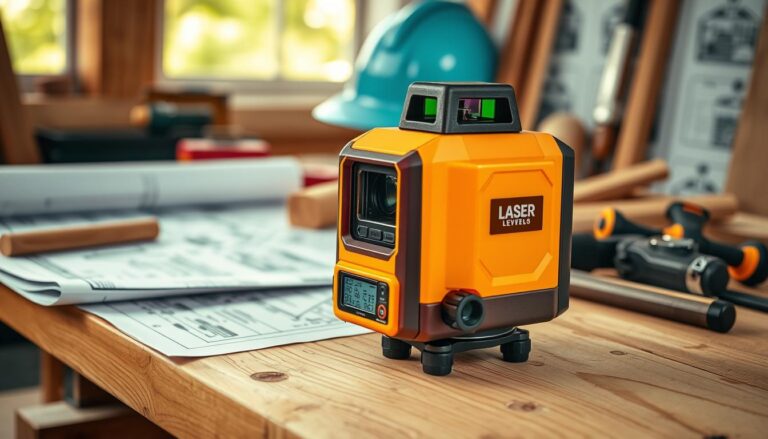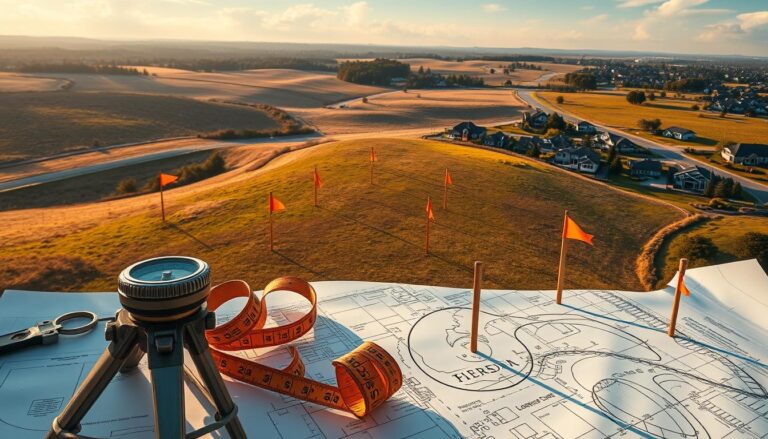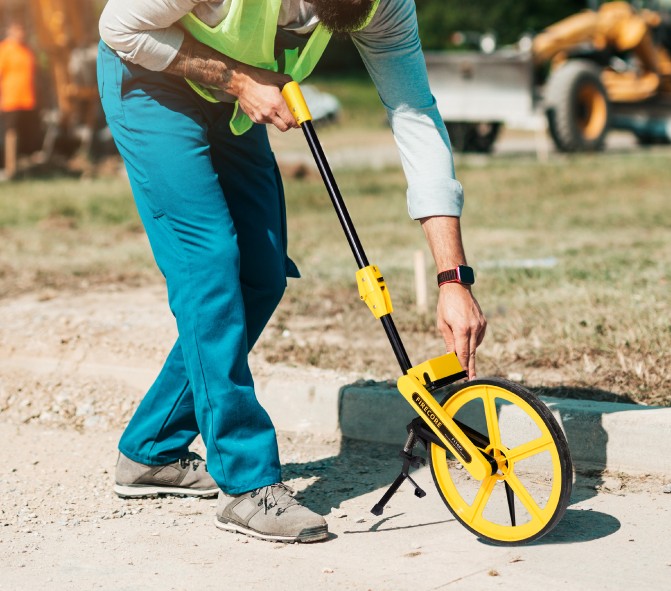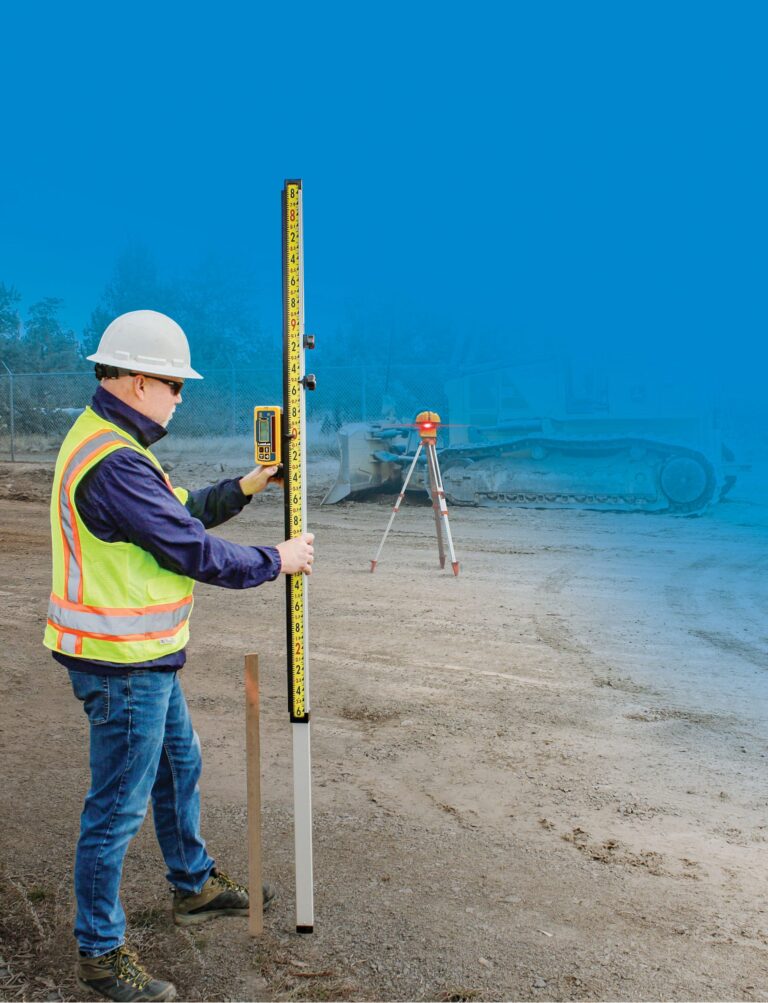How to Use a Laser Distance Measuring Device
Laser distance measuring devices have changed how professionals like contractors and architects work. They can quickly and accurately measure lengths, widths, and heights. These tools are now key in many industries.
Brands like Leica DISTO and Bosch make a variety of laser distance measurers. This guide will show you how to use one. You’ll learn to take precise measurements with confidence.
Key Takeaways
- Understand the basics of laser distance measuring devices
- Learn how to operate a laser distance measurer effectively
- Discover the benefits of using leading brands like Leica DISTO and Bosch
- Get tips on how to achieve accurate measurements
- Explore the various applications of laser distance measurers in different industries
Understanding Laser Distance Measuring Technology
It’s important to know how laser distance measuring devices work. These tools, like those from Leica DISTO and Bosch, are key in construction and real estate. They send out a laser beam to a target, which bounces back, giving precise measurements up to 650 feet with an eighth of an inch accuracy.
How Laser Measurement Works
Laser measurement devices send out a laser beam to a target. The beam then bounces back to the device. It calculates the distance based on how long it took for the round trip. Brands like Leica DISTO and Bosch are known for their reliability and precision.
Time-of-Flight vs. Phase-Shift Technology
There are two main technologies in laser distance measuring devices: Time-of-Flight (ToF) and Phase-Shift. Time-of-Flight technology uses the speed of light to calculate distance. Phase-Shift technology measures the phase difference between the emitted and received signals. Each technology has its own uses and benefits.
Accuracy Specifications Explained
Accuracy specs of laser distance measurers are given by the makers. For example, a device might be accurate to ±1/8 inch over a certain range. Knowing these specs helps choose the right device for tasks like construction, real estate, or DIY projects.
Advantages Over Traditional Measuring Tools
Laser distance measuring tools have big advantages over old tools like tape measures. They give quick and accurate measurements over long distances without touching anything. This makes work faster and less prone to mistakes. Brands like Leica DISTO and Bosch offer devices with extra features to boost their usefulness and precision.
Benefits and Applications of Laser Distance Measurers
Laser distance measurers have changed how we measure things. They are accurate, easy to use, and versatile. This makes them a must-have for both professionals and DIY fans.
Construction and Renovation Projects
In construction and renovation, laser distance measurers are key. They help measure room sizes, check structural alignment, and figure out material needs. They’re faster and more accurate than old methods.
Real Estate and Property Assessment
In real estate, laser distance measurers are essential. They give precise property measurements for appraisals and marketing. They make it easy to measure rooms and outdoor areas quickly.
DIY Home Projects
For DIY projects, laser distance measurers are great. They help measure spaces, check furniture fits, and figure out area for projects. They help homeowners do projects with confidence and precision.
Knowing how to use a laser distance meter well is key. It makes a big difference in both work and home projects. Laser distance measurers are a handy tool for many tasks, showing their worth in any project.
Getting Started With Your Laser Distance Measuring Device
Unboxing your laser distance measurer is just the start. It’s key to understand how to set it up and use it. Always follow the instructions provided by the manufacturer for the best results.
Unboxing and Initial Setup
First, check your device for any damage when you unbox it. Make sure all accessories, like the carrying case and user manual, are there. The setup usually involves choosing the right measurement units and learning the basics.
For example, Leica DISTO series devices need you to set the measurement units and learn how to calibrate them.
Battery Installation and Power Options
Laser distance measurers usually run on batteries. Find the battery compartment, often at the back or bottom. Put the batteries in the right way to avoid damage.
Some tools, like Bosch’s, can be recharged. Knowing how to use the power options and battery life is key for ongoing use.
Understanding the Display and Controls
The display and controls are vital parts of your device. The screen shows you measurements, battery status, and more.
Button Functions and Layout
Get to know the button layout, as it differs by model. You’ll find measurement triggers, unit switches, and mode selectors. For example, the Leica DISTO D2 has simple, easy-to-read buttons.
Display Symbols and Indicators
It’s important to understand the symbols and indicators on your device’s screen. These include measurement units, laser activation indicators, and error messages. Check your user manual for a full explanation of these symbols.
How to Use a Laser Distance Measuring Device: Basic Operations
Using a laser distance measuring device is easy. It just takes a few steps to get accurate results. First, learn the basics to use your device to its fullest.
Taking Your First Measurement
Getting your first measurement is simple. Make sure your device is set up and calibrated right. Follow the instructions from the maker.
Finding the Reference Point
Finding the right reference point is key for good measurements. Most devices let you pick from different points, like the front or back. Choosing the right point makes your measurements consistent and correct.
Aiming and Triggering
After picking your reference point, aim the laser at your target. Make sure the laser beam is steady and clear. Then, press the measure button. The device will show the distance on the screen.
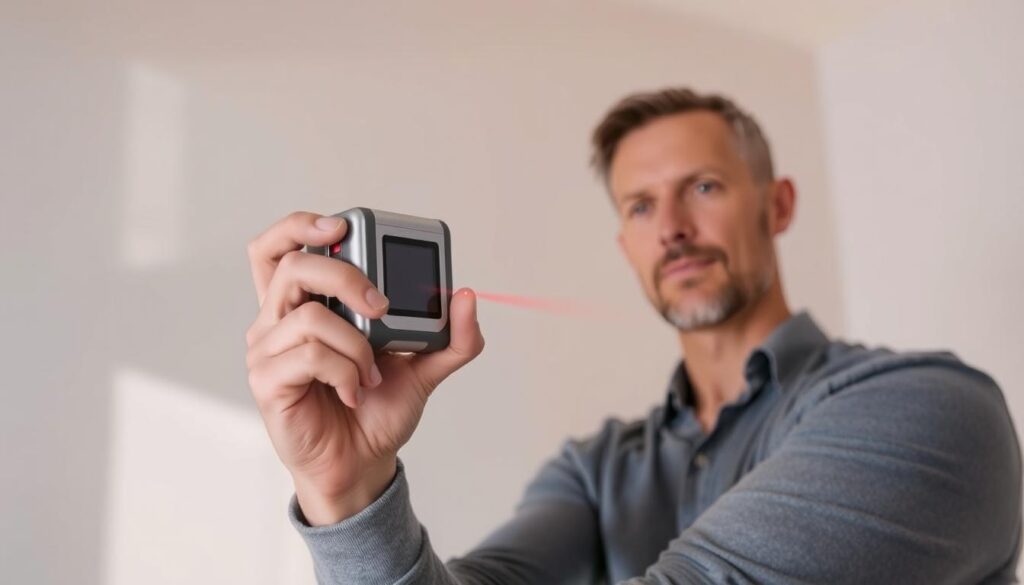
Understanding Measurement Units and Conversion
Laser distance measurers show measurements in different units, like meters, feet, or inches. Knowing how to switch and convert units is important. Most devices let you change units in the settings menu. For example, you might need to switch from feet to meters for a construction job.
Saving and Recalling Measurements
Many laser distance measurers can save and recall measurements. This is great for big projects needing many measurements. To save a measurement, press a special button after taking it. You can then recall these measurements as needed, making it easier to compare or calculate totals.
Learning these basic steps will help you use your laser distance measuring device well. It ensures your measurements are accurate and reliable. Whether for a DIY project or a professional site, knowing how to use your device is crucial for success.
Advanced Measurement Techniques
To get the most out of your laser distance measuring device, it’s key to know its advanced features. These tools are more than simple distance measurers. They have features that boost your productivity and accuracy in many projects.
Area and Volume Calculations
The Best Laser Distance Measurers can calculate areas and volumes. This is super useful in construction, renovation, and real estate projects. Knowing the dimensions of spaces is crucial here.
Room Area Measurement
Measuring a room’s area is easy with a laser distance measurer. Just measure the room’s length and width. The device will then calculate the area. This is handy for tasks like flooring, painting, or installing wallpaper, where knowing the exact area is key for material planning.
Complex Space Volume Calculation
For complex spaces, like irregularly shaped rooms or multi-faceted areas, laser distance measurers can figure out volumes. They do this by taking multiple measurements and applying formulas to compute the volume. This is great for figuring out the volume of materials needed or the space’s capacity.
Indirect Measurements Using Pythagoras
Laser distance measurers can also do indirect measurements using the Pythagorean theorem. This is useful when direct measurement is hard, like measuring a tall object’s height or the distance across an obstacle. The device uses the Pythagorean theorem to figure out the needed measurement based on other known values.
Continuous Measurement Mode
Another cool feature is the continuous measurement mode. It lets you track distances in real-time. This is great for monitoring object movement or tracking changes in dimensions over time. The continuous mode gives you a live view of measurements, making it easier to adjust and refine your work.
By learning these advanced techniques, you can fully use your laser distance measuring device. This boosts your efficiency and accuracy in many tasks and projects.
- Enhance productivity with advanced measurement features
- Improve accuracy in complex measurement tasks
- Utilize continuous measurement mode for dynamic tracking
Mastering the Leica DISTO Series
The Leica DISTO series is known for its accuracy and advanced features. It has a range of devices for different needs. These include simple distance measurements and complex calculations like area and volume.
The series is famous for its innovative tech and easy-to-use interface. Models like the Leica DISTO D2, X3, X4, and S910 meet various professional needs.
Leica DISTO D2 Features and Operation
The Leica DISTO D2 is small and easy to use for basic distance measurements. It has a clear display and simple controls. It’s great for beginners and offers basic functions like distance, area, and volume calculations.
Key Features:
- Compact design for easy handling
- Simple and intuitive user interface
- Basic distance, area, and volume measurements
Leica DISTO X3/X4 Advanced Functions
The Leica DISTO X3 and X4 have advanced features for complex measurements. They include indirect measurements, continuous mode, and area calculations. The X4 also has tilt measurements.
Advanced Functions Include:
- Indirect measurements using Pythagoras
- Continuous measurement mode
- Tilt measurements (X4 model)
Leica DISTO S910 Professional Applications
The Leica DISTO S910 is for professionals, with features like 3D measurements and Bluetooth. It connects to smartphones or tablets via the Leica DISTO Plan app. This makes documenting and analyzing measurements easier.
Professional Applications: The S910 is perfect for construction, renovation, and real estate. It offers precise and efficient measurement solutions.
Using Leica DISTO with Bluetooth and Apps
Many Leica DISTO models, like the S910, have Bluetooth. This lets users send measurements to their devices. The Leica DISTO Plan app helps document, analyze, and share measurements. This makes measurement tasks more efficient.
By learning the Leica DISTO series, professionals can greatly improve their work. They benefit from the advanced features and easy-to-use interfaces of these devices.
Guide to Bosch Laser Measuring Tools
Bosch offers a variety of laser measuring tools for different needs. These tools are known for their accuracy and ease of use. They come with features that help both professionals and DIY fans.
Bosch has many models, each with its own special features. Knowing how to use these tools can help you get the most out of them.
Bosch GLM20 Basic Operation
The Bosch GLM20 is a simple laser measuring tool. It’s great for quick and accurate distance measurements. Just put in the batteries, turn it on, and you’re ready to go.
This tool can measure up to a certain distance. It also lets you switch between different units. Its small size makes it perfect for many tasks, from DIY to professional work.
Bosch GLM50 C Advanced Features
The Bosch GLM50 C has more features than the GLM20. It can calculate areas and volumes, do indirect measurements, and more. It’s perfect for bigger projects.
This tool is also very accurate and durable. It works well indoors and outdoors. It’s great for professionals in construction and renovation.
Bosch Blaze Series Special Features
The Bosch Blaze series is for those who need top-notch accuracy. These tools have tilt measurement and an easy-to-use interface. They also have Bluetooth for easy data transfer.
With the Blaze series, you get better functionality and precision. This makes complex tasks easier to handle.
Connecting Bosch Devices to Smartphones
Many Bosch tools, like the GLM50 C and Blaze series, have Bluetooth. This lets you connect them to smartphones or tablets. You can then use Bosch’s apps to enhance your tool’s features.
Connecting your device to a smartphone opens up more features. You can store measurements, do calculations, and export data for later use.
- Easy connectivity via Bluetooth
- Access to additional features through Bosch apps
- Ability to export measurements for documentation
Safety Considerations and Best Practices
Using laser distance measuring devices safely means knowing the best ways to use them and the risks. These tools are safe if used right, but it’s key to know how to avoid accidents.
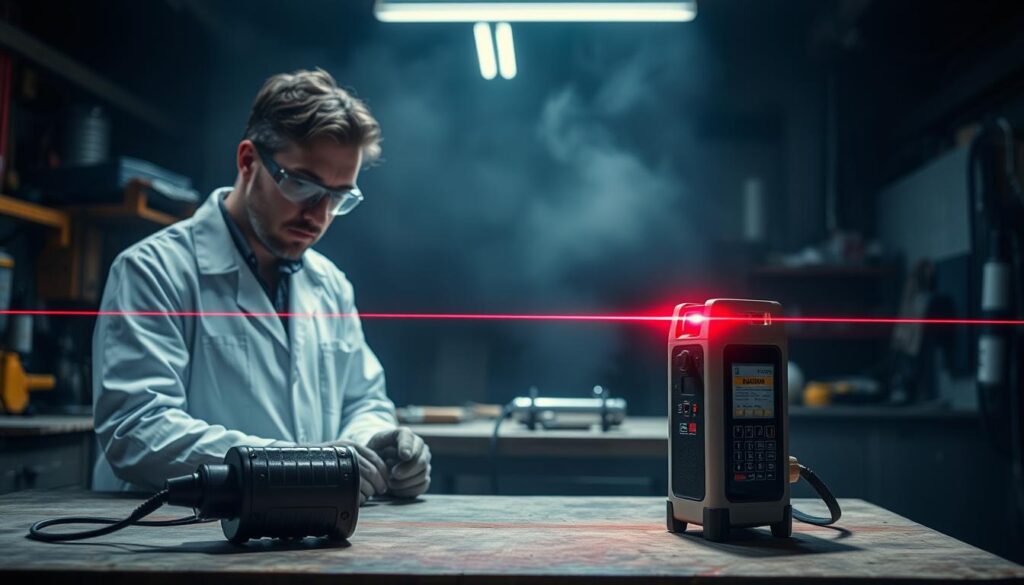
Laser Classification and Eye Safety
Laser distance measurers are sorted by how much laser they emit. You’ll mostly see Class 2 and Class 3R/3B lasers. Class 2 lasers are safe for most uses because their beam is visible. This makes you blink or look away, avoiding eye harm.
But, it’s still important to not look directly at the laser beam. This could cause eye strain or other problems. Always stick to the maker’s safe use tips.
The eye safety tips for laser distance measurers are:
- Avoid direct eye exposure to the laser beam.
- Use the device in a way that prevents accidental reflections into the eyes.
- Follow the manufacturer’s guidelines for safe usage.
Environmental Factors Affecting Accuracy
Many things in the environment can mess with how accurate laser distance measurers are. Things like very hot or cold temperatures, high humidity, and bright lights can affect them. To keep things accurate, users should:
- Use the device within the recommended temperature range.
- Avoid measuring in extremely bright or low-light conditions.
- Ensure the device is calibrated according to the manufacturer’s instructions.
Proper Handling to Maintain Calibration
To keep your laser distance measurer working well, handle it carefully. Don’t drop it, keep it away from extreme temperatures, and don’t expose it to harsh places. Also, check and calibrate it regularly as the maker suggests.
By sticking to these safety tips and best practices, you can use your laser distance measurer safely and effectively.
Troubleshooting Common Issues
Using a Leica DISTO or Bosch laser measuring tool can sometimes lead to problems. It’s important to know how to fix these issues. We’ll look at common problems and how to solve them.
Error Messages and Their Meanings
Error messages on your laser distance measuring device can be confusing. But knowing what they mean is the first step to fixing the problem. Both Leica DISTO and Bosch devices show error messages for specific issues.
Leica DISTO Error Codes
Leica DISTO devices have specific error codes for different problems. For example, a hardware malfunction error code might need professional help. Check your user manual for a list of error codes and their meanings.
Bosch Error Indicators
Bosch laser measuring tools also show error messages or codes. It’s important to understand these indicators to troubleshoot. Common issues include tilt sensor errors or measurement errors due to bad conditions.
Accuracy Problems and Solutions
Accuracy is key when using a laser distance measuring device. Issues can come from environmental conditions, device calibration, or user technique. To keep accuracy, make sure your device is calibrated right and used in the right conditions.
Extreme temperatures or humidity can mess with your measurements. Always check your device’s manual for the best operating conditions.
Battery and Power Issues
Battery and power problems can really affect your device’s performance. Issues include short battery life, not turning on, or power supply problems. To fix these, check the battery contacts for corrosion, use the right batteries, and follow the manufacturer’s battery care tips.
If your device has rechargeable batteries, make sure you’re charging it right. If it won’t turn on, try resetting it as the manufacturer suggests.
Conclusion
Learning to use a laser distance measuring device can really boost your work in many areas. This includes construction, renovation, and even DIY projects at home. By knowing how these tools work, their advantages, and how to use them well, you can get precise measurements easily.
To make the most of your laser distance measurer, follow some key steps. This includes handling it right, calibrating it, and keeping it safe. Brands like Leica and Bosch have models with cool features. These include calculating areas and volumes, indirect measurements, and even Bluetooth connectivity.
By remembering the main points from this guide, you’ll use your laser distance measurer with confidence. This means you’ll get accurate results and work more efficiently. Whether you’re a pro or a DIY fan, using these tools can greatly improve your project’s outcome.
